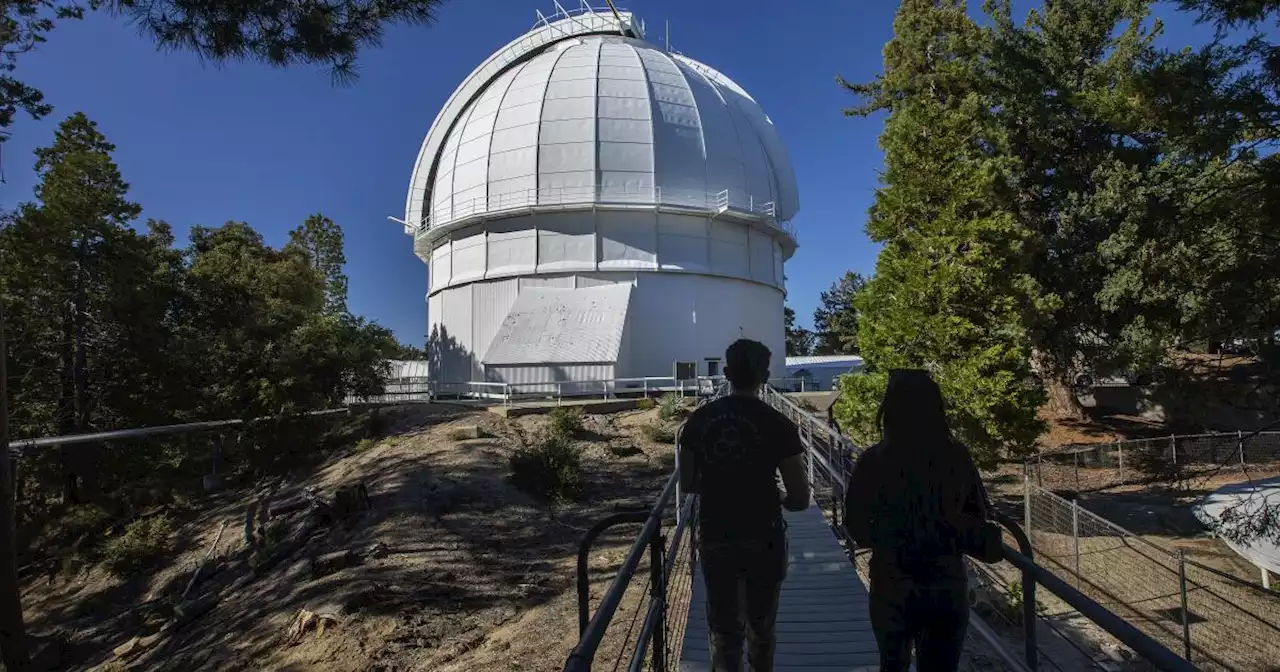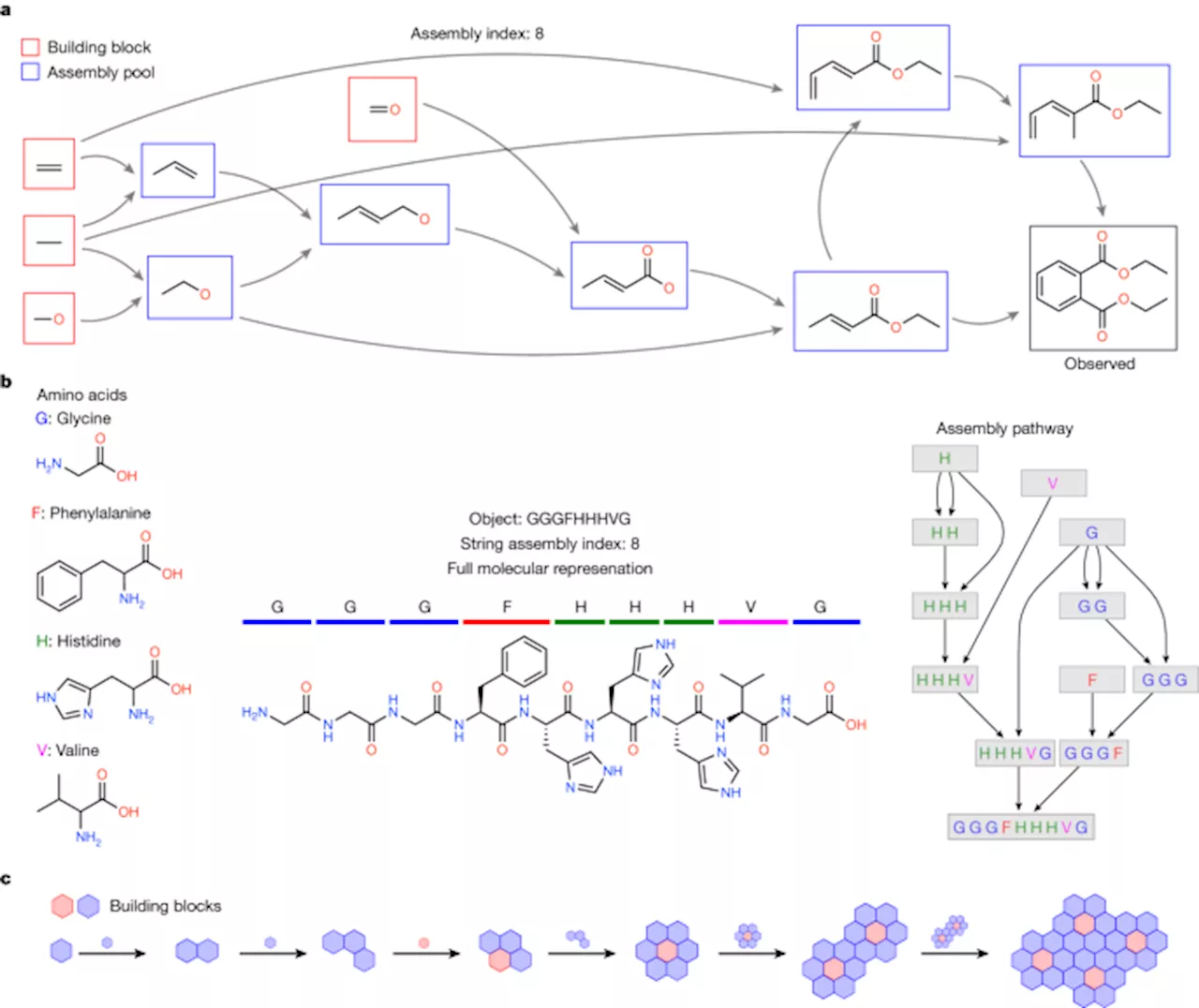Scientists have grappled with reconciling biological evolution1,2 with the immutable laws of the Universe defined by physics. These laws underpin life’s origin, evolution and the development of human culture and technology, yet they do not predict the emergence of these phenomena. Evolutionary theory explains why some things exist and others do not through the lens of selection. To comprehend how diverse, open-ended forms can emerge from physics without an inherent design blueprint, a new approach to understanding and quantifying selection is necessary3–5. We present assembly theory (AT) as a framework that does not alter the laws of physics, but redefines the concept of an ‘object’ on which these laws act. AT conceptualizes objects not as point particles, but as entities defined by their possible formation histories. This allows objects to show evidence of selection, within well-defined boundaries of individuals or selected units. We introduce a measure called assembly (A), capturing the degree of causation required to produce a given ensemble of objects. This approach enables us to incorporate novelty generation and selection into the physics of complex objects. It explains how these objects can be characterized through a forward dynamical process considering their assembly. By reimagining the concept of matter within assembly spaces, AT provides a powerful interface between physics and biology. It discloses a new aspect of physics emerging at the chemical scale, whereby history and causal contingency influence what exists. Assembly theory conceptualizes objects as entities defined by their possible formation histories, allowing a unified language for describing selection, evolution and the generation of novelty.
Thank you for visiting nature.com. You are using a browser version with limited support for CSS. To obtain the best experience, we recommend you use a more up to date browser . In the meantime, to ensure continued support, we are displaying the site without styles and JavaScript.with the immutable laws of the Universe defined by physics. These laws underpin life’s origin, evolution and the development of human culture and technology, yet they do not predict the emergence of these phenomena.
We introduce the foundations of AT and its implementation to quantify the degree of selection and evolution found in a collection of objects. Assembly is a function of two quantities: the number of copies of the observed objects and the objects’ assembly indices .
, whereby objects are discovered quickly but reproduced slowly, the expansion of assembly space is too fast under mass constraints to accumulate a high abundance of any distinguishable objects, leading to a combinatorial explosion of unique objects with low copy numbers.
日本 最新ニュース, 日本 見出し
Similar News:他のニュース ソースから収集した、これに似たニュース記事を読むこともできます。
 The battle to save Mt. Wilson Observatory, where we found our place in the universeThe most important things we know about the cosmos were discovered in the mountains above Los Angeles. 'You don’t just throw away a historic place,' says one of the volunteers trying to save it.
The battle to save Mt. Wilson Observatory, where we found our place in the universeThe most important things we know about the cosmos were discovered in the mountains above Los Angeles. 'You don’t just throw away a historic place,' says one of the volunteers trying to save it.
続きを読む »
 10 DC Universe Canon Questions James Gunn Needs To AnswerThe DC Universe will begin a new live-action canon.
10 DC Universe Canon Questions James Gunn Needs To AnswerThe DC Universe will begin a new live-action canon.
続きを読む »
 | ‘Loki’ is here to save the Marvel Cinematic UniverseThe second season of “Loki” is a return to form for Marvel Studios.
| ‘Loki’ is here to save the Marvel Cinematic UniverseThe second season of “Loki” is a return to form for Marvel Studios.
続きを読む »
 JWST takes a jab at the mystery of the universe's expansion rateJWST's new detections are the most precise of their kind, but they don't clear up a baffling puzzle about the cosmos.
JWST takes a jab at the mystery of the universe's expansion rateJWST's new detections are the most precise of their kind, but they don't clear up a baffling puzzle about the cosmos.
続きを読む »
 Chris Pratt’s Best DC Universe Casting Is Way Too Close To The MCUChris Pratt's best DCU casting is too repetitive.
Chris Pratt’s Best DC Universe Casting Is Way Too Close To The MCUChris Pratt's best DCU casting is too repetitive.
続きを読む »
 Is DC Comics Bringing Plastic Man To The New DC Universe?DC Comics has just been through a round of trademark registrations. Blue Beetle, Creature Commandos, DC Dark Legion and Plastic Man.
Is DC Comics Bringing Plastic Man To The New DC Universe?DC Comics has just been through a round of trademark registrations. Blue Beetle, Creature Commandos, DC Dark Legion and Plastic Man.
続きを読む »
